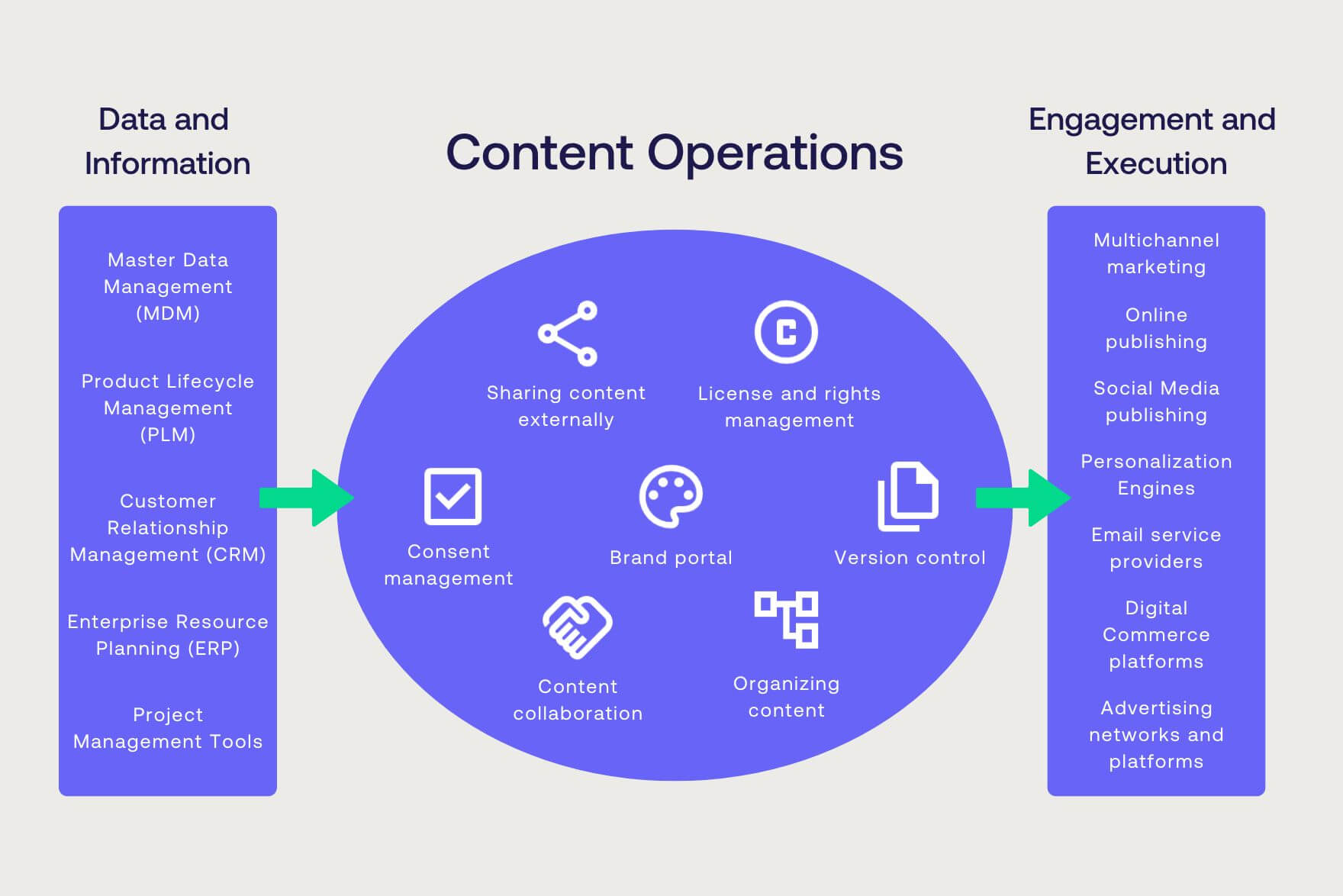
Over the past few years, we’ve witnessed a drastic increase in digital campaigns and communications. This is a full paradigm shift in how we consume, produce, and distribute content that content creators, marketers, and businesses must navigate.
Today, audiences and customers expect content to be easily available, personalized, and up-to-date, increasing the need for effective Content Operations.
In order to offer the right content, to the right people, at the right times, modern content teams and content creators can no longer be tied down to single-purpose applications.
Instead, they must invest in Content Operations Platforms (COP), offering a seamless data management experience for creating content, managing assets, and enabling collaboration across team members.
In this article, we’ll take a closer look at Content Operations, explaining what it is and why you need it.

What is Content Operations?
First off, Content Operations (or content ops) is about bringing together people, process, and technology to manage our increasingly complex modern workflows.
A Content Operations Platform (COP) is the technical setup for successfully creating, managing, measuring, and distributing content across relevant channels and devices.
Effective COPs work as the foundation for successful content marketing and ensures that every piece of content aligns with organizational goals.
They support project management, workflow efficiency, and collaboration across roles and responsibilities. And should include tools for all tasks related to content operations, including the management of metadata, rights & licenses, and the assets' approval status & lifecycle stage.
Additionally, the platform should provide access to digital assets and function as a brand portal where quality content is easily searchable, with relevant data intact.
DAM trends: Embracing DAM 3.0 for effective Content Operations
Following this definition, it’s easy to see that very few - if any - software providers can claim to offer best-of-breed tools encompassing every demand of today’s Content Operations Platforms.
Therefore, a COP should be API-based and easily integrated with other core systems, such as design software, Master Data Management (MDM), Content Management Systems (CMS), Multi-channel Marketing Hubs (MMHs), and so on.
LEARN MORE: What can a DAM system API do
As emphasized by Gartner in the report: “Drive Agility and Scale for the Future With Content Operations” published 19 May 2022, Content Operations is not understood as one singular type of software but as the aggregation of multiple technologies facilitating scalable and agile content management.
Why enterprises need a Content Operations Platform
In today’s marketing landscape, we know a massive amount of content is being consumed digitally.
To stand out, marketers must ensure their content finds its way to relevant people at the right time and channel. This requires managing content operations strategies that support evolving trends in social media, blog posts, and beyond. Additionally, marketers must leverage data to ensure the content is relevant, up-to-date, and easily available.
For this to be possible, the marketing & communications departments must invest in systems that gather and manage data, organize digital assets, and facilitate creating content and content distribution across multiple channels and devices.
This includes enabling team members to collaborate effectively and ensuring a smooth workflow from ideation to execution.
LEARN MORE: 6 Challenges All Marketing Teams Face when Managing Digital Assets
This is not done by investing in a single out-of-the-box software. Rather, it is considered best practice to build a scalable ecosystem for your content: a Content Operations Platform.
Since a COP is API-based, your team can configure and scale the system to fit their needs and leverage emerging technologies, such as Artificial Intelligence (AI), Virtual Reality (VR), Predictive Analytics & Algorithms, etc.
Want to learn more?
Talk to one of our experts to discover how we can streamline your organization’s content workflows, empowering your content operations team to deliver seamless customer experiences.


